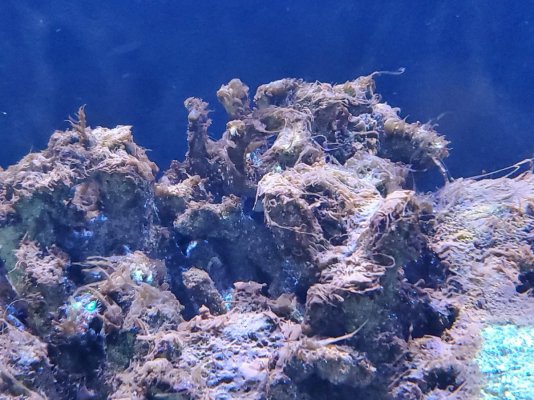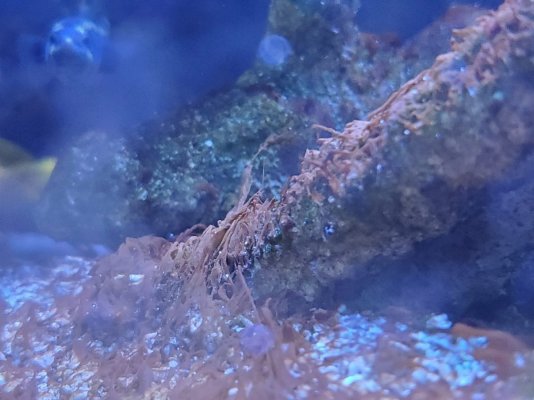- Joined
- Feb 17, 2020
- Messages
- 16
- Reaction score
- 5
Tank is about 8 months old. 120 gallon rimless with a sump. I spent all the money like a lot of you and got auto roller mat and a good skimmer for nutrient export. I also have Chaeto growing in the sump under a Kessil purple/red refugium light. I put only about a nickle sized piece of Rods food in the tank once a day along with a small pinch of NLS pellet food. 1 gallon is auto changed every day and yes I use RO.
After initial setup with dry sand and bleach cured rock, I had the typical diatoms. That went away and I had a pretty tank for awhile with 0 nitrate and struggled with high PO4 at like 0.3. I could not get Chaeto to grow though and nuisance algae took over in the sump. I then had bad red cyano take over the display tank. I learned that 0 nitrate was bad and that it was the reason for PO4 not coming down. I started dosing nitrate and now have my tank dialed in at a consistant 0.3 PO4 and 5-10 nitrate. With parameters "perfect" I nuked the red slime with chemiclean. Tank was back to looking good.
Now I have another problem. I have some kind of algae growing all over everything and it has been there for at least 5-6 weeks now. I was thinking it was diatom since I had to do a large 30% water change after the chemiclean but it is a bit stringy. Not long stringy though. I wipes off of the rock very easy though so it is not like a hair algae. Any thoughts on what this is and how to get rid of it?
8 months $6k in and I am not enjoying myself much. I did not think the algae would kill corals but I have lost some hammers, a torch, gonnis, and even my pulsing xenia looks really bad. Only thing that looks good is Anthelia. I cannot grow coraline to save my life but have good alk and Ca. I think my tank is not algae free long enough to get corraline established.


After initial setup with dry sand and bleach cured rock, I had the typical diatoms. That went away and I had a pretty tank for awhile with 0 nitrate and struggled with high PO4 at like 0.3. I could not get Chaeto to grow though and nuisance algae took over in the sump. I then had bad red cyano take over the display tank. I learned that 0 nitrate was bad and that it was the reason for PO4 not coming down. I started dosing nitrate and now have my tank dialed in at a consistant 0.3 PO4 and 5-10 nitrate. With parameters "perfect" I nuked the red slime with chemiclean. Tank was back to looking good.
Now I have another problem. I have some kind of algae growing all over everything and it has been there for at least 5-6 weeks now. I was thinking it was diatom since I had to do a large 30% water change after the chemiclean but it is a bit stringy. Not long stringy though. I wipes off of the rock very easy though so it is not like a hair algae. Any thoughts on what this is and how to get rid of it?
8 months $6k in and I am not enjoying myself much. I did not think the algae would kill corals but I have lost some hammers, a torch, gonnis, and even my pulsing xenia looks really bad. Only thing that looks good is Anthelia. I cannot grow coraline to save my life but have good alk and Ca. I think my tank is not algae free long enough to get corraline established.





















